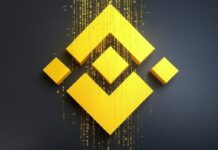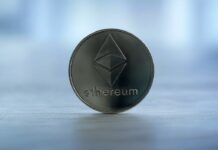Liquefy Labs has made a new attempt around asset tokenization, connecting Linear and Convergence with Lithium, and building an ecosystem of barrier-free circulation of assets through multi-faceted DeFi components.
Written by: Dove
In 2020, the new crown epidemic will spread globally and the global economy will be hit. Against this backdrop, the policies surrounding digital asset supervision are further clarified. Financial institutions mainly in the United States continue to increase their holdings of digital assets, and the cryptocurrency market has once again ushered in a bull market. In addition to the maturity of the upper-level technology ecosystem represented by Ethereum, breakthroughs have also been made in the formation of the capital system of the global digital securities industry and the construction of primary and secondary market infrastructure.
According to data from Security Token Market, the total market value of assets in the digital securities market at the end of 2020 will reach US$366,523,463, an increase of more than 500% from the market value of US$59,339,362.52 at the beginning of the year. As of April 2021, the total market value of digital securities market assets has reached US$696,625,920, an increase of more than 90% from the end of 2020. It can be seen that the digital securities market is growing exponentially.
Although the market value of the global digital securities market is growing rapidly, it also presents extremely obvious problems such as a single trading platform and an overweight single-category asset market. In addition, the technical standards for asset digitization have not yet been unified. At this stage, digital securities issuance (STO) adopts different protocol standards for different assets, and it is very likely that the issue of cross-chain requirements for assets cannot be fully balanced in the later stage. Solving the bottleneck of liquidity and the underlying technology has become a breakthrough in this field. In 2020, Decentralized Finance (DeFi) tried to connect real assets through digital securities. This innovation may be able to change the current dilemma.
How to create a new digital securities ecosystem and integrate DeFi to further enhance the potential of digital securities? Liquefy, Asia’s largest securitization token issuance platform, is using the expansion of Liquefy Labs to demonstrate its grand vision.
The ambition of the post-90s: Liquefy Eco-Lego silhouette emerges
In 2018, the post-90s Adrian gave up his million-dollar investment banking job and co-founded Liquefy with two friends. In Adrian’s view, blockchain has great potential for development. He also said in an interview: “All entrepreneurs have thought about disrupting the industry. After learning about the blockchain, I feel that any financial technology or Blockchain technology companies should all subvert traditional enterprises and help traditional enterprises enter the new era from the old era instead of replacing it.”
The three Liquefys created by the post-90s have always had a clear goal: to use blockchain technology and Web 3.0 applications to bring innovation opportunities to the real asset investment field, and to build an encrypted native capital market to make it a supportive An ecosystem of formal assets.
Based on asset attributes and circulation scenarios, the existing secondary market digital securities asset products can be divided into three types: real estate equity digital securities, platform equity securities, and digital funds/stocks. With a clear positioning, Liquefy was first committed to digital transformation with tokenized technology for enterprises. In June 2019, the Hong Kong family business Stan Group and Liquefy collaborated to realize Asia’s first real estate tokenization. In July of the same year, Liquefy received investment from well-known investment institutions such as Ideanomics, NEO, Kenetic and East Chain Co, and completed a US$2.6 million A round of financing. In October, Liquefy cooperated with the Gulf Family Consortium on a real estate tokenization project.
Although it has a certain position in the field of digital securities, Liquefy’s ambition is not just a single securities tokenization platform, but to create a new ecology. It coincides with DeFi showing its potential in 2019, and Liquefy accurately Seizing this opportunity, we plan to carry out a more comprehensive layout.
Lego World by Liquefy Labs
At the end of 2019, the founders of Liquefy had already begun to pay attention to DeFi. After discovering its huge potential, they began to “get deeper and deeper.”
In the view of the founding team, asset tokenization requires stronger empowerment, and through DeFi, it is possible to establish an original ecological encrypted capital market, so that all types of assets can be easily traded.
In addition, digital securities can be benchmarked against physical assets to highlight financial attributes. This is because physical assets have obvious disadvantages, such as poor liquidity, difficult pricing, and complex property rights transfer processes, but they also have many advantages, such as relatively stable prices, larger volumes, and real cash flow. Incorporating physical assets into collateral through asset digitization to balance the volatility of the underlying assets is also an indispensable step for DeFi expansion and sustainable development.
The opportunity is here, how to perfectly integrate digital securities and DeFi? Liquefy decided to use Liquefy Labs as the basis to form its huge ecosystem in a Lego way. The vision of Liquefy Labs is to strengthen the tokenization of assets. It hopes to establish a native cryptocurrency capital market through DeFi, so that all types of assets can be easily traded, and focus on fostering the next generation of DeFi and NFT protocols, Liquefy Labs’ current and future projects will serve its vision.
Lego component one: Linear Finance
The first focus of Liquefy’s layout in the DeFi field, which focuses on digital securities, is synthetic assets.
Liquefy’s co-founder & CPO Drey found out that although there are already many lending agreements on the market when trying out different types of DeFi applications, there are mixed assets in terms of good and bad.
In July 2019, Drey became the co-founder of Linear Finance and formed a team to start the development of the Linear project. From a cross-chain perspective, Linear Finance solves various problems caused by the performance of existing Ethereum, such as high handling fees, early transactions caused by slow update frequency of oracles, and poor types of synthetic assets.
As one of the “Lego components” in the Liquefy Labs ecosystem, Linear Finance also has a vision: to create a decentralized protocol that everyone can access.
Linear Finance was initially built on Ethereum, and then partnered with Binance Smart Chain (BSC). Because Binance Chain is compatible with the blockchain integration of the Ethereum Virtual Machine (EVM), it solves the pain points of the existing synthetic asset protocol, such as high gas fees, slow transaction confirmation, and slow product updates, and supports instant confirmation and transaction of multiple synthetic asset products. End immediately. Users can start with LINA (a certificate issued by Linear Finance) from different DeFi AMM platforms on Ethereum, and then switch to the BSC chain for subsequent pledge and transaction synthesis asset processes. In addition, users can use more timely price prediction updates to construct synthetic asset products, so that the window for preemptive transactions is lower, and no slippage is achieved in transactions.
As a Linear Finance token, LINA is both a pledge and a governance token. It has a strong value capture ability. It can pledge to synthesize Liquid to obtain income-inflation income and transaction fees, liquidity mining, and will also be used for Governance of the Linear Agreement.
Linear Finance also completed a private placement of 1.8 million US dollars, led by 6 strategic investment institutions, including the famous blockchain venture capital firm NGC Ventures, the cryptocurrency quantitative fund company Alameda Research, the well-known Korean blockchain investment company Hashed, and the transaction The service provider CMS Holdings, the top over-the-counter digital asset trading platform Genesis Block, and the venture capital firm Kenetic Capital focusing on blockchain technology.
Lego component two: Convergence Finance
If 2019 is the world of DeFi, then NFT in 2020 will have a share of the pie. Liquefy Labs also did not miss this hot spot.
Convergence Finance, one of the ecological Lego of Liquefy Labs, aims to establish “unforeseen liquidity” through automated market makers (AMM), bringing real-world assets into the decentralized world. Through the layer 2 two-layer network, it allows The issuance of security-type synthetic tokens in cooperative projects also facilitates investors and fund managers to trade on AMM.
Take the NFT market as an example. Many investment-grade NFTs are often overpriced and not everyone can participate in it. Fragmented NFT investment is expected to become a new trend in the digital collectibles market.
Fragmented NFT artwork can allow ordinary investors to participate in high-end market investment, and its growth rate is also significantly higher than that of low-end market. Convergence can subdivide a high-priced NFT into packaging tokens so that it can be traded on ConvX (Convergence’s AMM). The built-in smart contract will pre-set a time period during which the NFT will remain in the system. After this period of time has passed, the system will sell the NFT on the market, and investors who hold tokens representing the NFT package can share the proceeds proportionally.
Lego component three: Lithium
Linear and Convergence are the channels responsible for asset tokenization, while Lithium is a tool for efficient asset pricing.
Currently, the data oracle does not provide private companies with updated pricing on a regular basis. In fact, the only way to price illiquid assets is through an expensive and slow valuation process, which also limits pricing to very high-value assets. Lithium’s vision is to solve the problem of information asymmetry in the private market.
Lithium’s pricing method is to integrate smart versions of platforms such as PitchBook and Crunchbase, and to incentivize users through cryptocurrency. Take the pre-IPO company pricing as an example. If you want to know the price of the pre-IPO company, you can ask Lithium Finance this question and issue a bounty, such as a $100 Lithium token. After the question is released, smart nodes (analysts, investors, etc.) provide answers, and delegate the authority to answer them to give trust in their answers. The protocol aggregates the answers and randomly selects a subset of the answers to create the final answer. After revealing the final answer, you can also see the source data to verify the valid answer. The final price is calculated by the DMI mechanism algorithm.
The Lithium agreement can obtain pricing prices on a regular basis, allowing frequent pricing of illiquid assets. And when the final IPO pricing is successful, rewards will be paid to the person closest to the answer and the reputation of the smart node will be updated.
Even if we are addicted to the infinite charm of the crypto world, it is undeniable that besides the consensus behind the encrypted products, it is still based on physical assets, and the inclusion of digital securities solves the problem of the scarcity of basic assets in the DeFi ecosystem and effectively improves the asset structure. , Increased the supply of assets, and improved leverage efficiency while addressing part of the demand for credit expansion.
Digital securities have physical objects as value protection, which not only expands the diversity of DeFi asset services, but also meets the needs of traditional investors. DeFi can bring the necessary traffic to the digital securities industry for its expansion, enrich digital securities ecological service products, supplement liquidity, and increase transaction volume. DeFi and digital securities complement each other and coordinate and promote financial innovation, which will have the opportunity to create a more efficient new financial market.
Looking back at the digital securities platforms on the market, Liquefy is truly unique. It can be seen from its “Lego component” that Liquefy Labs has carried out a full range of development and innovation attempts around asset tokenization, connecting Linear and Convergence with Lithium, step by step to realize Liquefy’s construction of an encrypted native capital market and an ecosystem of unobstructed circulation of assets system.
Summary and outlook
The market size of DeFi has grown substantially in 2020. After a year of development, its business ecology and infrastructure have taken shape, and asset transactions on the chain are active, and it is in a period of rapid development. However, the DeFi platform still has security, risk control, and compliance issues. At the same time, it is faced with issues including the compliance and delivery of assets, and mainstream financial investors are mostly on the sidelines.
As the largest STO platform in Asia, Liquefy has opened up a number of new platforms in the DeFi field through Liquefy Labs, integrating real-life asset targets and operation models with DeFi after being digitized with blockchain technology, relying on synthetic assets, AMM protocols and Decentralized pricing and other methods provide a perfect solution path for the two types of assets at the liquidity level. In the future, DeFi will not be limited to native encrypted assets. The digitalization of real assets will optimize the underlying asset structure of DeFi and promote the overall ecological progress of DeFi. Liquefy Labs will also take on the important task of incubating the next generation of protocols, adding new impetus to the Web3.0 era.
DeFi and Web 3.0 are also gradually turning the traditional financial market and the encrypted digital world into reality, leading to the vitality and opportunities of the new financial era. This is the mission and vision of Liquefy and Liquefy Labs, and it is also a new financial era. The protection of key cornerstones.





